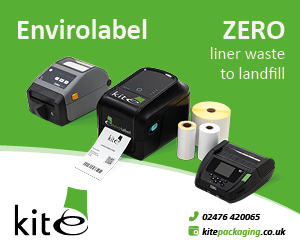Legislation: Natasha’s Law

Rachael Venditti, business development manager and registered nutritionist for allmanhall, outlines the key steps that are essential to have undertaken since Natasha’s Law was implemeted...
Natasha’s Law is a significant change as there will be a requirement for caterers to conform for the first time to labelling legislation currently in place for manufacturing operations, which inevitably have very different operational practices.
Do you have PPDS foods?
If this has not already been carried out, the first thing to identify is whether there are any pre-packed for direct sale (PPDS) foods which require a compliant label. As a reminder, PPDS foods are:
Prepared on-site.
Individually packaged.
Fully or partially packaged prior to selection.
The packaging would have to be disturbed to access the food.
Not pre-ordered.
Consider whether your PPDS range could be reduced, and risk mitigated by consolidating suppliers and reducing the range of ingredients used.
Create PPDS recipes
Step two is essential and should be undertaken as a priority if you haven’t already done so. Recipes for all PPDS foods will need to be created so that the allergens in each item are known, along with quantities so that the ingredient list is in descending weight order.
Obtaining ingredient and nutrition information
The method for obtaining information should now be confirmed and be in the process of being implemented. For example, will a catering platform, the labelling system or on-pack be the preferred method for capturing ingredient and allergen information? Remember to validate any information by checking details on-pack.
Labelling solution
If a labelling solution has not been set up, this is urgently required. Consider how the labelling solution works and fits into your new process. Also think about what hardware is required, such as printers, and where these will be located. The supply chain challenges being experienced by the whole industry is also applicable for label ordering, so don’t leave this too late.
Identify risks
Remember to allocate some time to identifying risks associated with your new process and establishing an operational practice to manage each risk. Risks may include a substitute product been sent in by a supplier, the allergen information changing on a supplier product, a member of the team not following a recipe or using different products, and members of the team confusing which labels are for which PPDS items.
Consider cross-contamination risk – precautionary allergen labelling
Carry out a risk assessment to review the risk of cross-contamination within the operation associated with the preparation and provision of PPDS foods and communicate any risks to your customers. The allmanhall example Natasha’s Law Risk Assessment template is a useful tool to support this process. It is important to note that ‘may contain’ should only be used if a real and genuine risk has been established.
Trial and train
Ensure that some time is allocated to trialling the new process and carrying out any final training, so that you and your team all feel comfortable that your processes will be delivered effectively.
EHO
There is still time to engage with your local environmental health officer, sharing how you will be approaching meeting the new legislation to obtain their feedback.
Communication
Factor in time to communicate your approach to Natasha’s Law compliance, and also a method to highlight that PPDS foods are made on site, such as displaying a poster or adding a sticker to relevant items. This will encourage diners to maintain important engagement with the catering team regarding their allergies and the suitability of the food on offer.
For more information on the background regarding Natasha’s Law, go to almanhall’s blog at www.allmanhall.co.uk/blog/getting-ready-for-natashas-law










